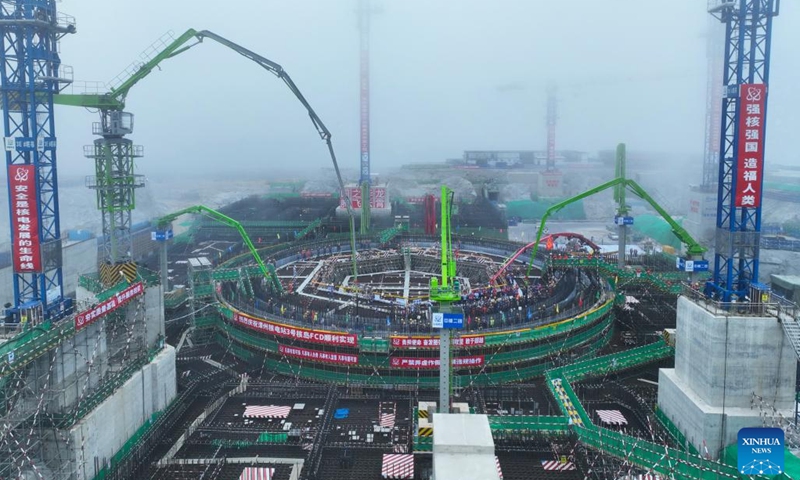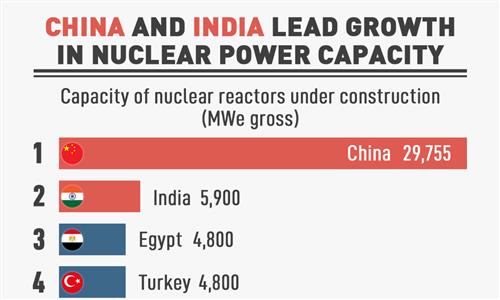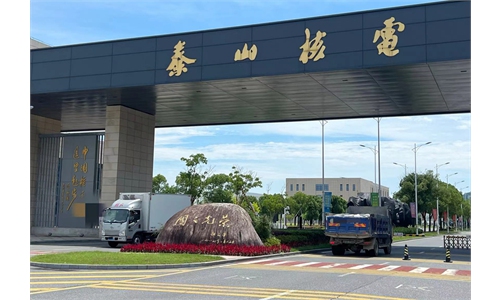
An aerial drone photo taken on Feb. 22, 2024 shows construction on the second phase of the Zhangzhou nuclear power project in Zhangzhou, southeast China's Fujian Province. China has begun construction on the second phase of the Zhangzhou nuclear power project using Hualong One reactors, domestically developed third-generation reactors, in the city of Zhangzhou, southeast China's Fujian Province.(Photo: Xinhua)
Members of the public can now book visits to the country's nuclear power plants in nine cities, China General Nuclear Power Group (CGN) announced on Wednesday.
The first tour group, themed on the nuclear industry, was launched on the same day in Ningde, East China's Fujian Province.
Curiosity-driven citizens who are heading to cities, including Ningde, Shenzhen in South China's Guangdong Province, Dalian in Northeast China's Liaoning Province and Wenzhou in East China's Zhejiang Province, can make online bookings for individual or group tours. CGN has worked with tourism authorities in these cities to set up the nation's first online booking system for visiting nuclear power plants.
Industry insiders said that professionally organized tours to nuclear facilities will have high educational value, and such tours can also boost rural tourism in areas where these facilities are located, according to a press release CGN sent to the Global Times on Wednesday.
Nuclear power plants show the achievements of China's modern industrialization and are a vital platform for sci-tech education in China. They also have tourist appeal, Lan Jingwen, a deputy head of the tourism bureau at Fangchenggang, South China's Guangxi Zhuang Autonomous Region, said in the press release.
The southern port city Fangchenggang is home to four nuclear reactors, two of which use Hualong One - the homegrown third-generation nuclear technology.
On August 7, 1987, construction began on the Dayawan Nuclear Power Plant in Shenzhen, the first large-scale commercial nuclear power station in China.
"My trip to the nuclear power plant was fascinating and worthwhile. The nuclear base is no longer a mysterious and lofty place to me," said Lei Lingli, who visited the nuclear base at Ningde as part of a pre-launch trial run trip.
Chinese experts noted that such tours will play a critical role in promoting China's green energy transition and the nation's dual carbon goals.
"This is a new form of industrial tourism, and it will offer knowledge about this lesser-known technology that many people still dread to this day. The educational value of such trips is significant," said Zhang Lingyun, executive editor-in-chief of the Tourism Tribune magazine.
The Global Times found that individual tours of the Dayawan Nuclear Power Plant are fully booked already for September 11, according to CGN's official booking channel on WeChat account as of press time on Wednesday.
Nuclear power generation on the Chinese mainland reached 440,000 gigawatt hours in 2023, accounting for nearly 5 percent of total national electricity output, according to the China Atomic Energy Authority.
As of the end of 2023, there were 55 operational nuclear power units and 36 approved or under-construction nuclear power units on the Chinese mainland, the Xinhua News Agency reported.




